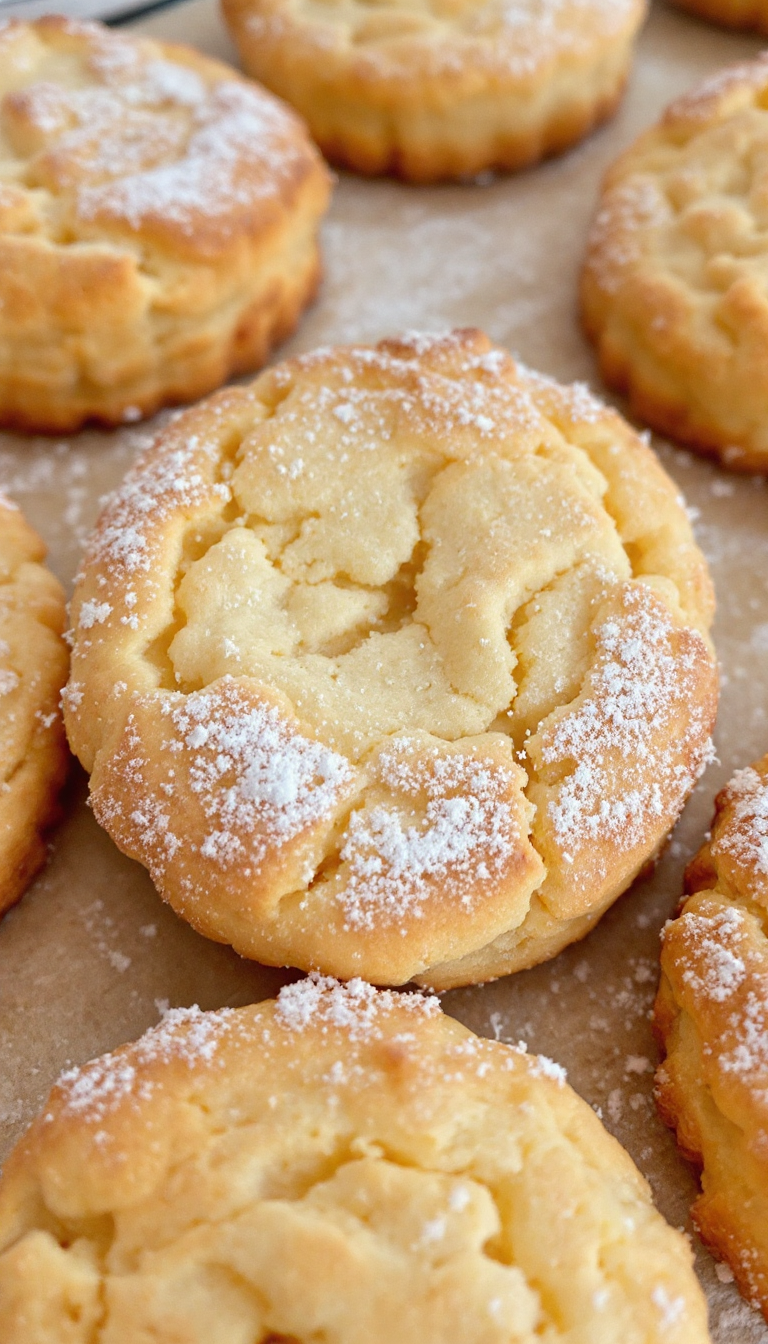Biscuits—those fluffy, buttery pillows of happiness that pair perfectly with morning coffee or evening stew. I remember the last time I baked them, the kitchen filled with the aroma of nostalgia. It’s like giving a hug to your taste buds, right? Now, I know some folks swear by specific techniques, but sometimes, a little chaos in the kitchen brings unexpected perfection.
Steps
- Begin by placing your butter in the freezer for 10-20 minutes to ensure it is very cold, which is crucial for achieving light and flaky biscuits. While waiting, preheat your oven to 425°F and prepare a cookie sheet with parchment paper.
- In a large bowl, mix together the flour, baking powder, sugar, and salt. Once combined, take your butter from the freezer and either grate it into the dry ingredients or cut it in using a pastry cutter until the mixture appears crumb-like.
- Pour the milk into the butter-flour mixture and gently mix with a wooden spoon or spatula until just combined. Avoid overworking the dough to keep the butter cold and the texture light.
- Transfer the dough onto a floured surface and gently bring it together with your hands. If it’s too sticky, sprinkle a little more flour. Fold the dough over itself and flatten it gently, repeating this folding process 5-6 times to create flaky layers.
- Pat the dough to about 1 inch thick using your hands, and use a floured 2¾ inch round biscuit cutter to cut out the biscuits, placing them closely on the prepared baking sheet. Rework the remaining dough to cut additional biscuits until you have at least 6.
- Bake the biscuits for 12 minutes or until they turn a light golden brown on top. If desired, brush them with melted salted butter straight out of the oven and serve warm.
Ingredients
- 2 cups all-purpose flour (250g)
- 1 tablespoon baking powder
- 1 tablespoon granulated sugar
- 1 teaspoon salt
- 6 tablespoons unsalted butter, very cold (85g), preferably unsalted European butter
- ¾ cup whole milk (177ml), or use buttermilk or 2% milk as alternatives
Nutritional Values
Calories: 1680kcal | Carbohydrates: 216g | Protein: 30g | Fat: 78g | Saturated Fat: 48g | Cholesterol: 198mg | Sodium: 2430mg | Potassium: 1722mg | Fiber: 6g | Sugar: 24g | Vitamin A: 2394IU | Calcium: 786mg | Iron: 12mg
FAQ
- What ingredients are needed to make homemade biscuits?
- To make these homemade biscuits, you will need all-purpose flour, baking powder, sugar, salt, unsalted butter, and milk.
- How can I ensure my biscuits turn out fluffy and soft?
- For fluffy and soft biscuits, it’s important to use very cold butter and milk. Freezing the butter before using and keeping the milk in the refrigerator until needed helps achieve the best texture.
- Can I use a rolling pin to flatten the biscuit dough?
- It’s recommended to use your hands instead of a rolling pin to gently shape the dough into a rectangle. Overworking the dough can make the butter warm, affecting the biscuit’s flakiness.
- What is the purpose of laminating the dough?
- Laminating the dough by folding it over itself multiple times encourages flaky layers in the biscuits, similar to the technique used in making croissants.
- Is it necessary to use unsalted butter, and can I use salted butter instead?
- Unsalted butter is recommended to control the salt content in the recipe. However, if you only have salted butter, you can adjust the added salt accordingly.
Tips
- Keep Ingredients Cold: For the fluffiest biscuits, ensure that your butter and milk are as cold as possible. Freeze your butter before using it and keep the milk chilled until it’s time to mix it in.
- Handle the Dough Gently: Overworking the dough can warm the butter and affect the texture. Use your hands instead of an electric mixer and avoid kneading too much to maintain a light, flaky biscuit.
- Create Flaky Layers: Fold the dough over itself 5-6 times to encourage layering, which contributes to the flakiness of the biscuits. This technique, known as laminating, is key for achieving a desirable texture.
- Use a Box Grater for Butter: Grating the butter ensures it’s evenly distributed throughout the dough without overworking it. This method is simpler and more effective than using a pastry cutter.
Equipment
- Biscuit cutter
- Box grater
- Pastry cutter (optional, if not using the box grater method)
- Parchment paper (for lining the baking sheet)


